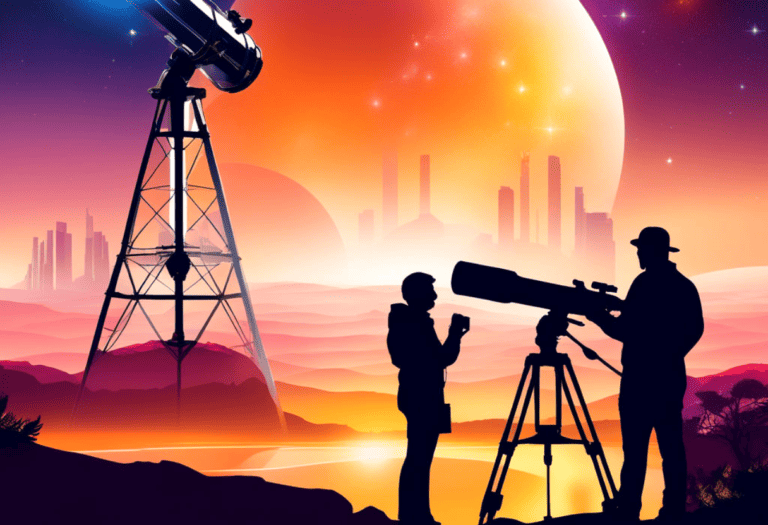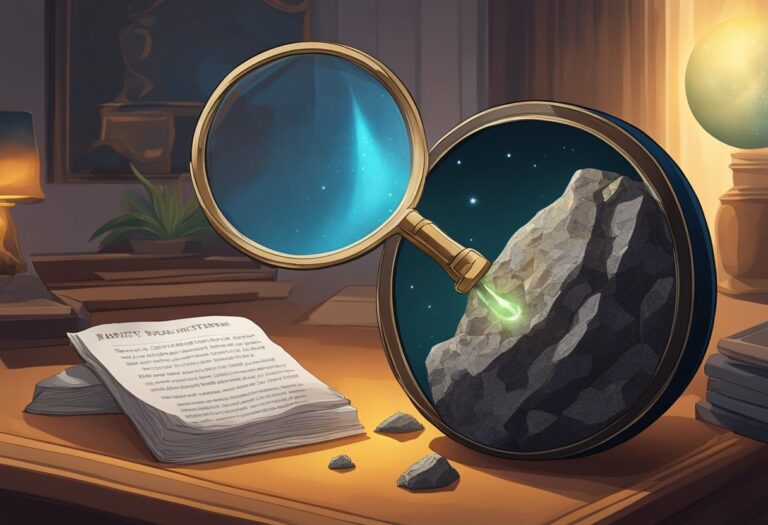Embarking on the journey of astrophotography?
A key component to success in this field is the equatorial mount. As a vital piece of equipment for astrophotographers, equatorial mounts enable precise tracking of celestial objects, countering Earth’s rotation and allowing for clear, long-exposure photographs of the night sky’s wonders. The German equatorial mount (GEM) is particularly popular due to its balance of stability and tracking accuracy.
Well, we’ll be going over:
- What are the essential features of an equatorial mount for astrophotography, and why are they important?
- Which equatorial mounts currently stand out for their quality, functionality, and ability to support astrophotography?
- How do these mounts cater to the diverse needs of astrophotographers, from those just starting out to seasoned experts?
Whether you’re capturing the intricate details of planetary surfaces or the grandeur of distant galaxies, the right equatorial mount can be a game-changer in astrophotography.
Let’s dive in.
Top Equatorial Mounts for Astrophotography
- Sky Watcher EQM-35 – Top Pick
- SVBONY SV219 Dovetail Plate
- YUEOCT Dovetail Plate
- Orion AstroTrack
- Sky Watcher EQ6-R Mount
In my experience, the right equatorial mount can make a significant difference in astrophotography. Having spent numerous nights under the stars, I’ve found that stability and precision tracking are key to capturing stunning celestial images. Below I’ve curated a list of the best equatorial mounts that are designed to enhance your astrophotography experience. These models offer advanced features like GoTo capabilities, heavy payload capacities, and fine-tuning controls to support a wide range of telescopes and cameras.
Sky Watcher EQM-35
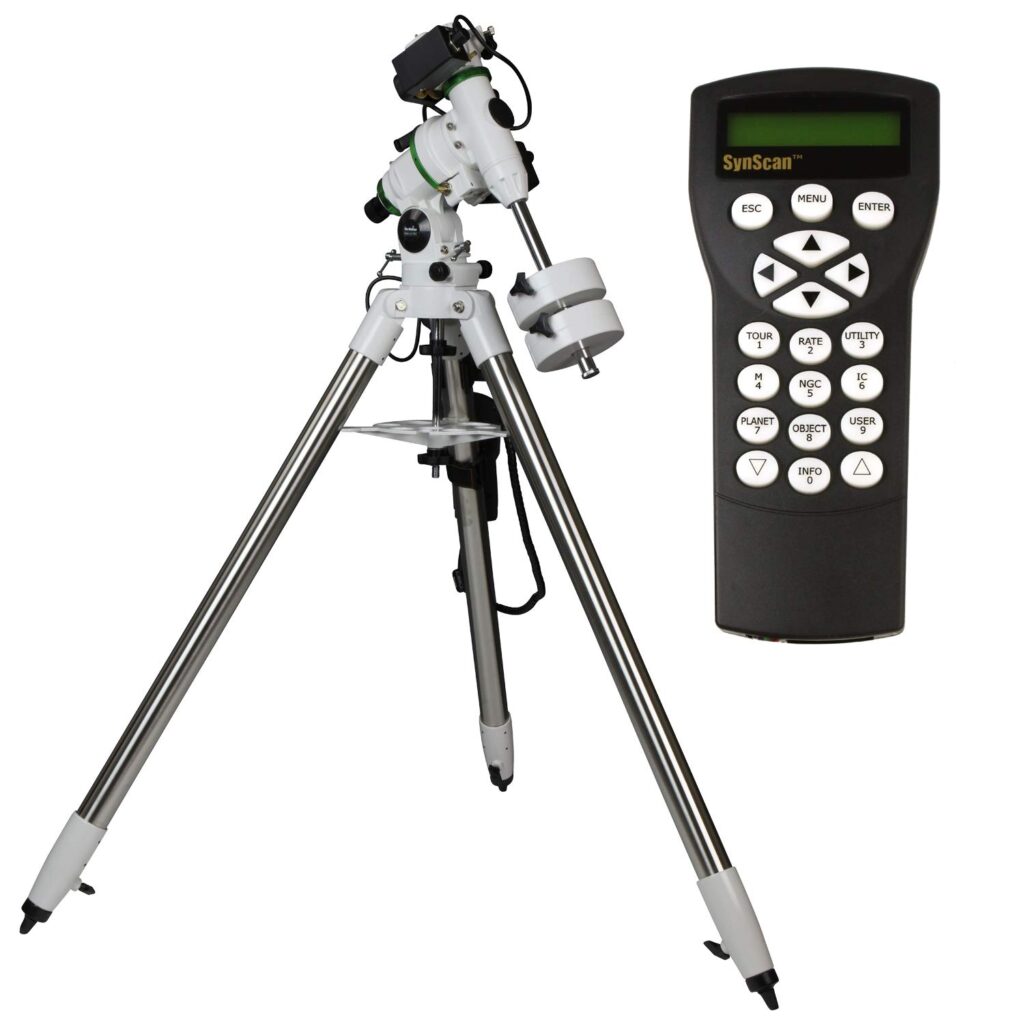
I recently had the pleasure of using the Sky Watcher EQM-35, and it offers a blend of portability and functionality that’s tough to beat.
Pros
Cons
I found the EQM-35 impressively solid right out of the box. The mount’s sturdiness is immediately apparent, with an all-metal build that confidently supports the telescope. Maneuvering through the clear night sky with the SynScan hand controller was a gratifying experience, as the database of over 42,000 objects kept me engaged for hours of exploration.
The EQM-35’s modular nature was another stand-out aspect for me. It’s refreshingly simple to switch between a full equatorial mount and a more portable tracking platform by removing the dec assembly. This flexibility shone on nights when I wanted a quick setup to capture a fleeting celestial event.
Although I have quite a bit of experience, I believe that newcomers to astrophotography might find the initial assembly and alignment a bit of a learning curve. Nevertheless, the included polar finderscope was an invaluable aid, making the alignment process more intuitive.
While I’m fond of traditional astronomy equipment, I did yearn for a more contemporary touch to the hand controller interface. Additionally, keep in mind that you’ll need to budget for a few extra bits like the USB cable for computer control, which isn’t included with the mount.
All things considered, the EQM-35 struck a fine balance between versatility and user-friendliness. Whether it was for visual astronomy or capturing long-exposure photographs, this mount provided a reliable foundation for my night sky adventures. It’s a solid choice for both budding and seasoned astronomers looking for a mid-range mount that won’t break the bank.
SVBONY SV219 Dovetail Plate
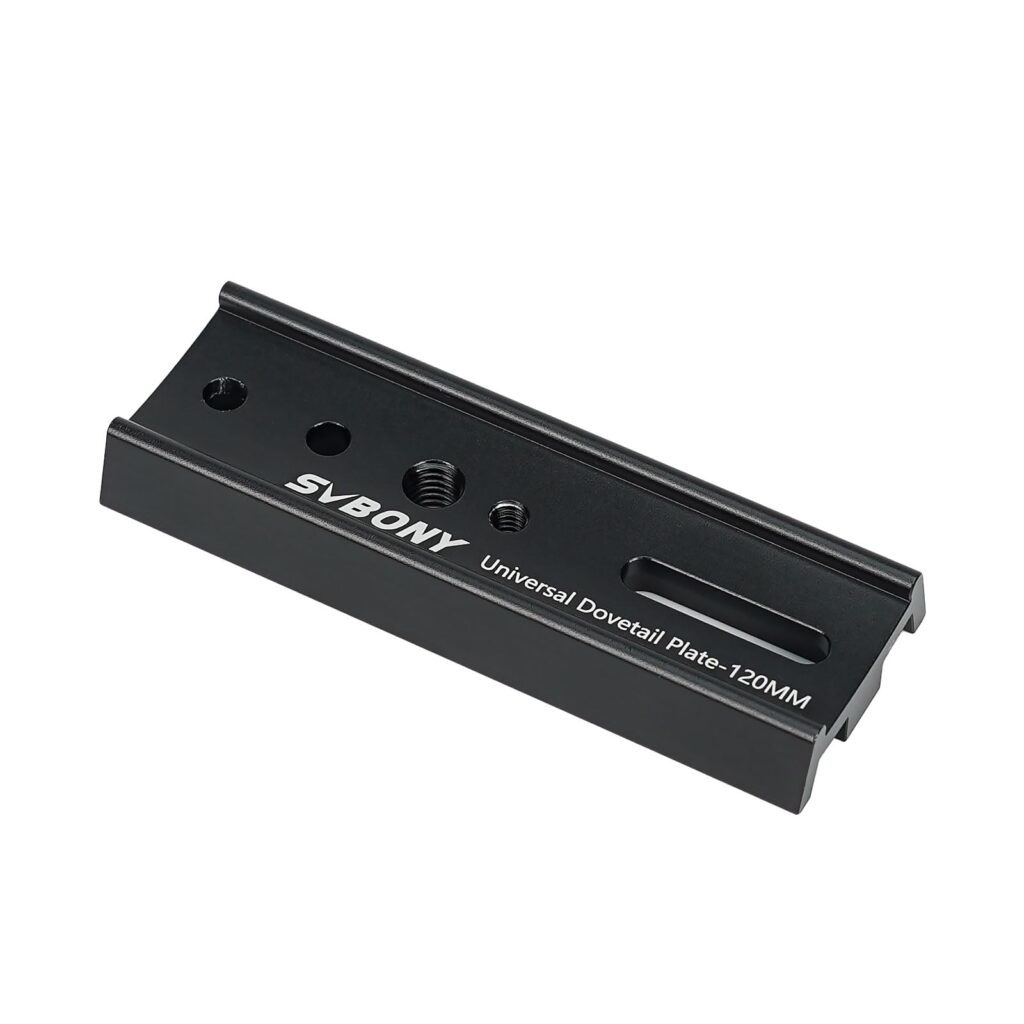
If your astrophotography setup demands a robust and versatile connection, the SVBONY SV219 Dovetail Plate is a hands-down essential.
Pros
Cons
As someone deeply invested in astrophotography, I’ve come to appreciate equipment that makes my nightly observations both easier and more rewarding. The SVBONY SV219 Dovetail Plate has proven to be such an addition to my gear. With its solid metal construction, it not only adds an element of sturdiness to my setup but also inspires confidence during long exposure captures. The convenience of the design can’t be overstated; switching out scopes has become a breeze.
During my last session with the SV219, I noticed the significant stability it provided. I connected my telescope to the equatorial mount without hassle, thanks to the universal design of the dovetail. The process was intuitive; aligning screws and securing the plate took mere moments. I was particularly impressed with the firm hold it maintained throughout the evening, ensuring there was no slippage or misalignment.
However, one must be aware of the limitations. The length of the plate may not cater to all sizes of telescopes or camera rigs. This is crucial for those with larger or more complex setups, as proper weight distribution is key to achieving balance. Additionally, while the build is sturdy and the anodizing adds to its longevity, prospective buyers should weigh the cost against other options, especially if working within a strict budget.
In summary, the SV219 is a sterling example of SVBONY’s commitment to quality and compatibility in astrophotography accessories. Its durability and the security it provides elevates the experience of capturing the night sky. Despite a few considerations regarding size and price, its benefits to an astrophotography enthusiast like myself are crystal clear.
YUEOCT Dovetail Plate
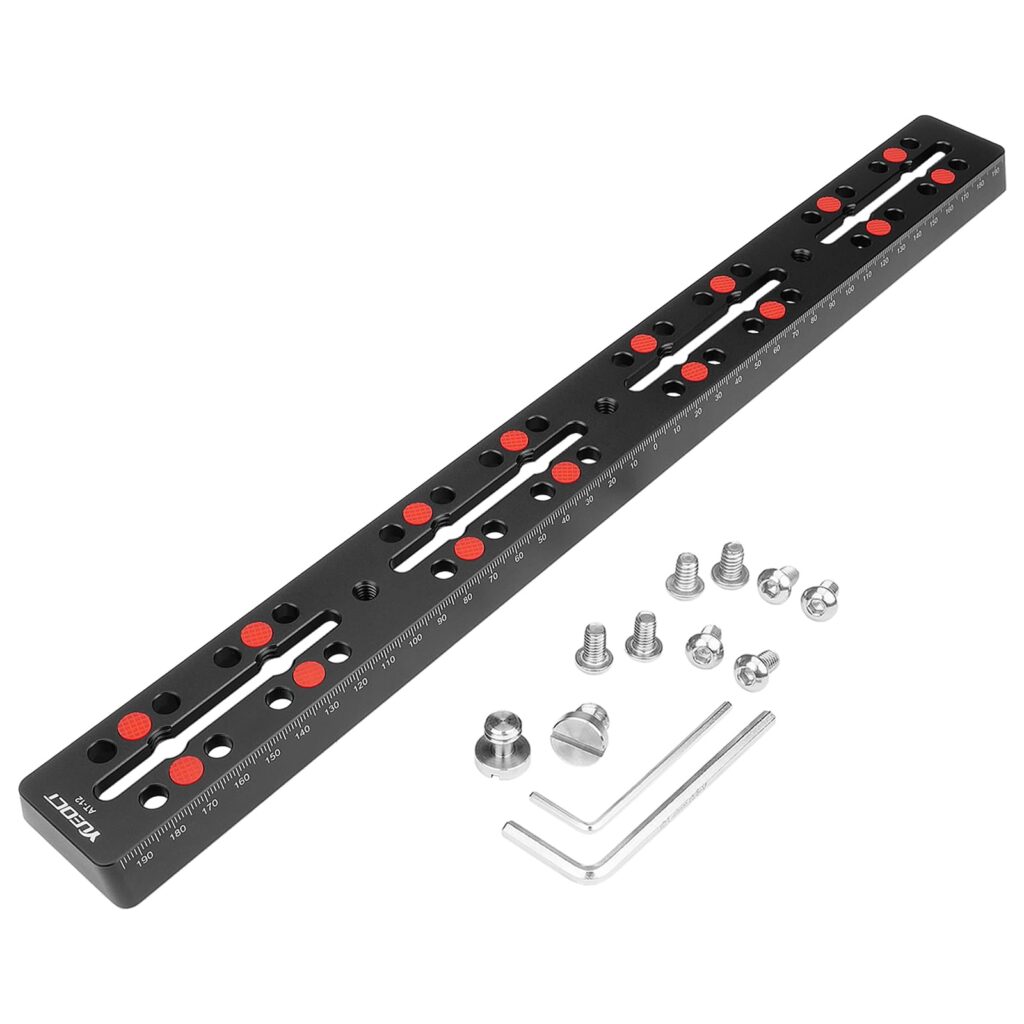
In my experience, this mount is a solid choice for those needing a lightweight, adaptable connection for their telescopic gear.
Pros
Cons
As an astrophotography enthusiast, I was pleased with how the YUEOCT Dovetail Plate allowed for easy adjustments when mounting my devices. Its Vixen-style dovetail compatibility made it a breeze to attach to my saddle. The range of mounting holes across the plate was indispensable for balancing my setup just right. Being able to secure my gear with the anti-slip pads gave me peace of mind, especially when making minute adjustments to capture that perfect celestial shot.
Carrying the plate to my observation location was no hassle at all — its lightweight design was a refreshing change from bulkier mounts I’ve used in the past. Setup was straightforward, and the long slots gave me the freedom to mount a variety of devices without being restricted by size or brand.
While the plate is quite functional and definitely made my astrophotography sessions more manageable, I did notice some vibration when using my heavier 8” Newtonian scope. This suggests that the YUEOCT plate, while versatile, might be better suited for lighter setups. Additionally, with relatively few reviews available, I recommend prospective buyers weigh the pros and cons carefully to determine if this plate meets their specific astrophotography needs.
Orion AstroTrack
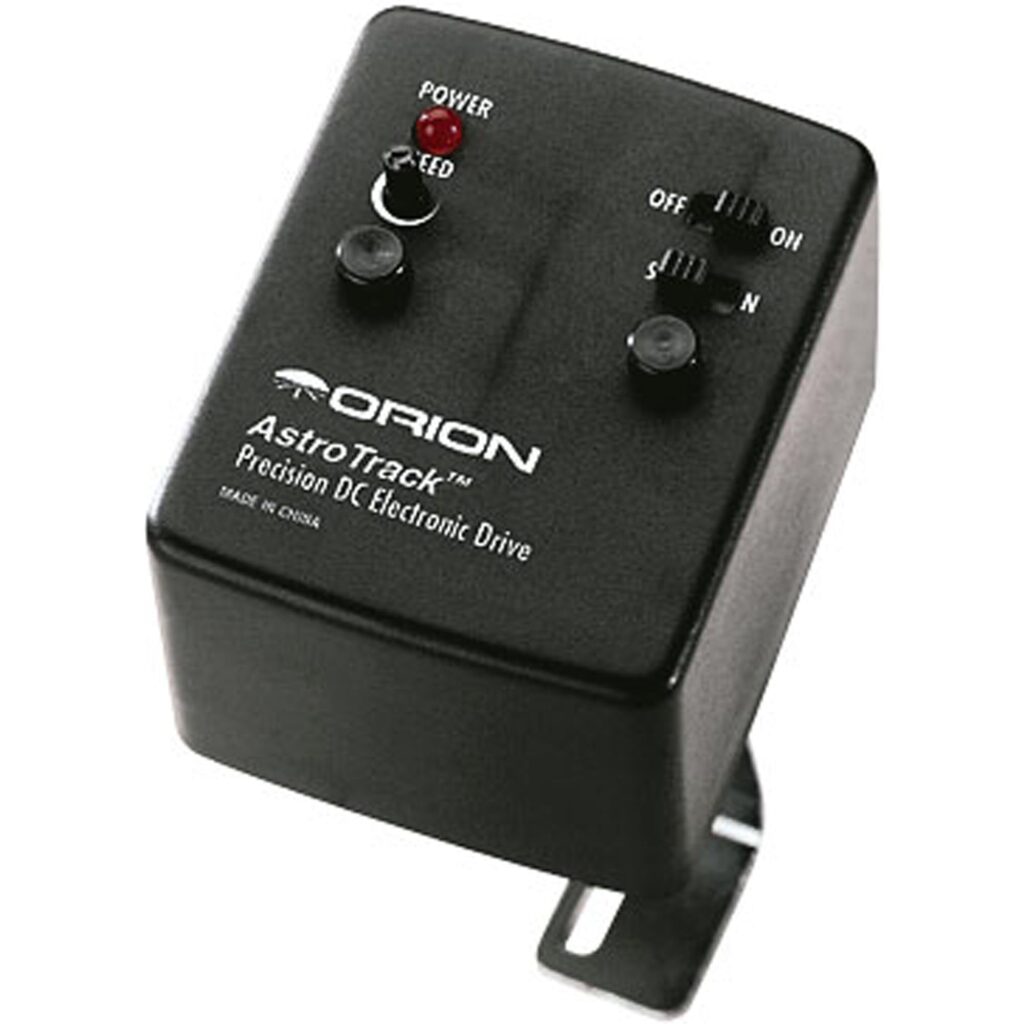
Having used the Orion AstroTrack Drive, I find it useful for casual sky watchers with small telescopes but not suitable for advanced astrophotography projects.
Pros
Cons
When I first affixed the Orion AstroTrack Drive to my EQ-1 mount, the simplicity of its design was immediately appealing. It was a breeze setting it up and I didn’t have to juggle too many cables which are a common hassle during nighttime observations. I appreciated the absence of cords, making my observation sessions feel uncluttered.
In use, the variable speed control was a handy feature, allowing me to fine-tune the tracking speeds to align with various celestial objects. This functionality came into play when switching between solar system objects, like tracking planets, and more distant deep-sky objects that required different rates.
However, it’s important to mention the Orion AstroTrack Drive isn’t without its quirks. During my observations, I sometimes found the motor drive reversing the object’s path in the eyepiece, which was unexpected and took some tweaking to correct. And while the device claims to be a servo motor, the two-wire configuration puzzled me, suggesting it might operate more like a basic DC motor.
For anyone just dipping their toes into the realm of astrophotography or amateur astronomers not looking to invest heavily, the Orion AstroTrack Drive is an understandable choice. But keep in mind its limitations – it’s not quite up to the task for more serious long-exposure astrophotography where precision is key. Despite its economic price point and ease of use, those seeking reliable long-term tracking for deeper celestial explorations might need to look towards more advanced and undoubtedly more expensive equipment.
Sky Watcher EQ6-R Mount
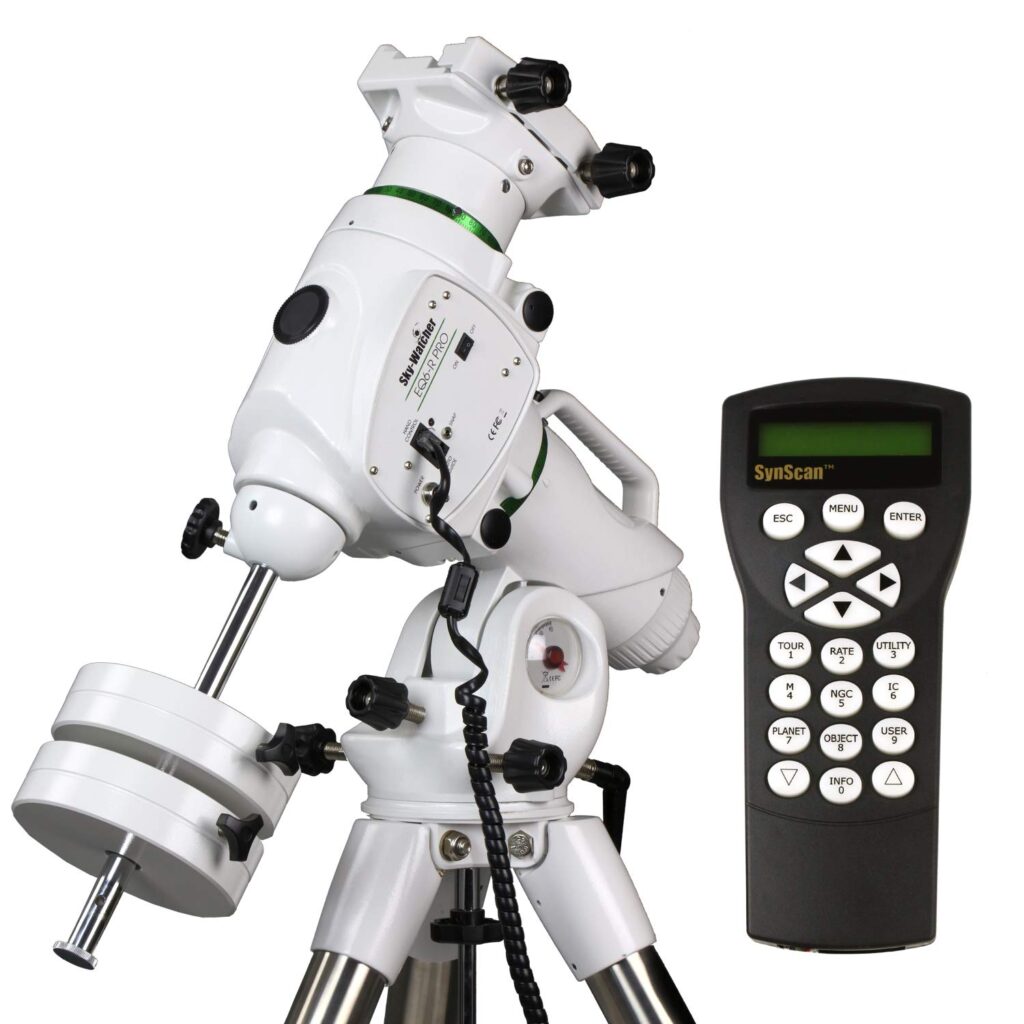
I believe photographers hunting for precision tracking will find the Sky Watcher EQ6-R mount an indispensable ally in astrophotography due to its robust build and fine-tuned controls.
Pros
Cons
Having recently had the chance to use the Sky Watcher EQ6-R, I was genuinely impressed with how smoothly it operates. Its quiet motors made late-night sessions a peaceful affair, and I could focus on my photography without any distracting noise. This mount also eliminated the struggle of post-processing that comes with tracking inaccuracies, thanks to its precision capabilities.
This mount handles heavy-duty scopes without breaking a sweat, and its solid construction was immediately apparent. It felt reassuring to know my gear was securely held, no matter the angle I was shooting at. Additionally, the dual D/V saddle offered excellent compatibility with various telescopes, saving me from the headache of mismatched equipment.
The included hand controller with its vast celestial object database was like having a personal guide to the stars. It made locating celestial bodies a breeze, allowing me to spend more time capturing the night sky’s beauty. Even periodic error correction, which can be daunting for some, seemed less intimidating with the intuitive SynScan system.
In conclusion, the Sky Watcher EQ6-R has earned a spot in my permanent gear set due to its harmonious blend of precision, reliability, and thoughtful extras intended for astrophotography enthusiasts.
Buying Guide
Understanding Mount Types
When selecting an equatorial mount, it’s crucial to understand the two primary types available – German Equatorial Mounts (GEM) and Fork Mounts. GEMs are known for their counterweight system which balances the telescope, while Fork Mounts typically feature a computerized alignment system and are more compact.
Key Features to Consider
- Payload Capacity: I always check the payload capacity, which should exceed the weight of my equipment to ensure stability and reduce strain on the mount’s motors.
- Mount Weight and Portability: Heavier mounts are often more stable, but for fieldwork, I balance this with the necessity for portability.
- Go-To Functionality: A mount with a Go-To system can automatically locate and track celestial objects, a feature that is invaluable for long exposure astrophotography.
- Tracking Accuracy: Precise tracking reduces star trails and improves image quality. I always look at a mount’s periodic error and consider mounts with lower values.
- Polar Alignment Aids: Some mounts come with built-in polar scopes or software that aid in aligning to the celestial pole, a feature that saves me time and increases accuracy.
Here’s a quick reference table for these features:
| Feature | Importance | Description |
|---|---|---|
| Payload Capacity | High | Must exceed equipment weight |
| Mount Weight | Moderate | Balance between stability and portability |
| Go-To Functionality | High | Automatic object location and tracking |
| Tracking Accuracy | High | Lower periodic error is preferable |
| Polar Alignment | Moderate | Aids that assist with alignment process |
Additional Considerations
- Power Supply: For long photography sessions, I ensure the mount can be powered efficiently, checking battery life or alternative power options.
- Construction Material: Durability is key. I opt for materials that can withstand regular use and varying weather conditions without compromising performance.
- Latitude Range: Ensure the mount accommodates the latitude of my usual observation sites to provide accurate tracking.
Thoughts on Budget
While quality often correlates with price, I consider mounts that provide the most essential features without overshooting my budget. Practicality should guide the purchase, focusing on features that will enhance my astrophotography experience.
Frequently Asked Questions
In my experience, these queries cover critical aspects a budding or seasoned astrophotographer might wonder about when choosing an equatorial mount.
What are the top beginner-friendly equatorial mounts for astrophotography?
I have found the Sky-Watcher EQ3 and the Celestron CG-4 to be excellent beginner-friendly equatorial mounts for astrophotography. They strike a good balance between functionality and simplicity for newcomers to the field.
Which GoTo equatorial mounts are recommended for astrophotography?
The Orion Atlas Pro AZ/EQ-G and the Sky-Watcher HEQ5 Pro SynScan are GoTo equatorial mounts I recommend. They offer advanced tracking capabilities essential for long-exposure astrophotography.
What are budget-friendly options for motorized equatorial mounts?
The Orion AstroView EQ Mount and the Sky-Watcher EQM-35 are motorized equatorial mounts that I suggest for those on a budget. They provide reliable performance without the high cost of more complex models.
How do Celestron equatorial mounts perform for astrophotography?
Celestron equatorial mounts, like the Advanced VX and CGX, perform admirably in my astrophotography endeavors. They are known for their ease of use, precision, and capacity to carry a range of telescopes and cameras.
Is an equatorial mount preferential to an altazimuth mount for astrophotography?
I prefer using an equatorial mount for astrophotography over an altazimuth mount due to its ability to track celestial objects smoothly along a single axis. This feature aligns with the Earth’s rotation, essential for long-exposure photography without field rotation.
What characteristics should one look for in an equatorial mount when using it with a camera?
When selecting an equatorial mount for use with a camera, I prioritize accurate tracking, payload capacity, and stability. A mount with periodic error correction and a high-quality gearing system is also crucial for achieving sharp images.


